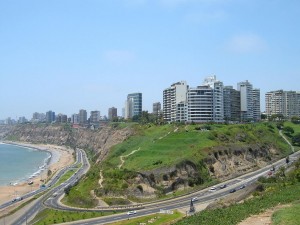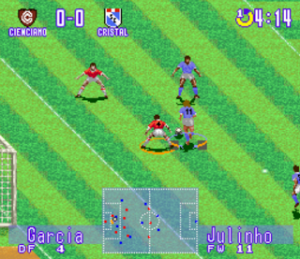Making Games in Peru

I landed in Lima, Peru, about two weeks ago. Lima is where I’m originally from, and even though I get a chance to come back every few months, it keeps feeling more different every time. This time, though, I’m here on a mission: thanks to the support of the Comparative Media Studies program here at MIT, for about two months I’m going to be tracking down and mapping out the local video game industry. Whenever I tell people about my research project, I usually get one of two reactions: either lots of excitement and curiosity; or confused, blank stares, even when I’m talking to people from Peru. The video game industry has gone largely unnoticed, and it’s understandable. Even though similar development scenes have been growing for some time and garnering some attention in countries such as Argentina, or especially, Brazil, the Peruvian scene, and specifically the Lima scene, is just now coming together. But there have been studios operating locally for over a decade, and people and groups playing around with game development even further back. My job while I’m down here is to reconstruct this history and to better understand how the industry is growing today, and what a Peruvian gaming industry is starting to look like.
This industry has gone already through many incarnations. In fact, my first point of contact with the local development scene came about when thinking about an old game I used to play as a kid: Fútbol Excitante (Exciting Football) was a SNES game one could acquire in informal markets selling cheaper games and consoles, and it played very similar to other football games then available. In fact, it played exactly like other football games then available: Fútbol Excitante was, in fact, a locally hacked version of a Konami game, International Superstar Soccer. It became very popular in the local market because, unlike the Konami original, it included teams from the local tournament as playable teams in the game, complete with actual player rosters and uniforms. It was a simple way to make the game more relevant to local audiences, and in hindsight, it is also an interesting example of how local users appropriate and reinterpret global commodities – and of the multiple conflicting issues arising from that, as this “hacks” were not only unauthorised, but also circulated informally (if not illegally).

Some googling for the origins of the game led me to discover the Twin Eagles Group, the game development group responsible for Fútbol Excitante – and for over two dozen other hacks and original games developed between 1989 and 2003, for platforms going all the way back to the Commodore 64. And through their meticulously self-documented history, other groups, people and games from the time started to come up, painting a picture of a relatively active and sizeable community creating their own games at a time when neither the technological base, the educational system or the economic situation actually lent itself to this sort of activity. The early history of game development in Peru is a history of various forms of reverse engineering: figuring out how various technologies work without any documentation, just through trial and error, and painstakingly making them do what their authors wanted them to do. Before Internet access was widely available in the city of Lima, people had to figure out on their own ways to make technologies work to problem solve, to design, and to circulate the resulting products with others in the local community.
Of course, the current scene is very different from these origins. Major changes in how the gaming industry operates globally have significant impact locally: the growth of mobile technologies and social networks, and the resulting shift to short form and casual gaming paired with the possibility of digital distribution, mean the local industry is no longer geographically constrained but can think of marketing games to national, regional or even global audiences. Changes in working practices make it possible for a local studio to outsource components to developers in other countries, while at the same time making it possible for local developers and studios to embed themselves in the production processes of studios abroad. And a favourable economic climate over the last several years has encouraged private and public interest and investment in technology-based industries.
These factors by themselves do not make an industry. Which is why I’m interested in taking a closer look at industry practices and how various communities are interacting with each other, especially at how these communities are figuring out ways to bypass obstacles and make room for themselves in the larger, global world of game development. Over the next few weeks, I’ll be meeting with game studios and independent developers; visiting offices, working spaces and industry events; and tracing connections to the broader learning, technology and innovation systems with which these practices are located. My hope is this will uncover ways in which the local industry is developing forms of peripheral innovation, and expanding and reinterpreting the practice of game development. And as I go about doing this, I will be sharing some updates here and would really appreciate any feedback you have.
